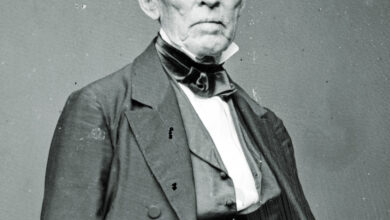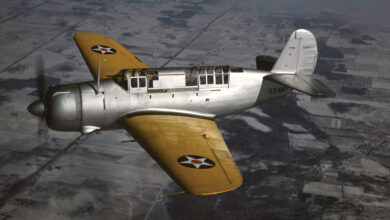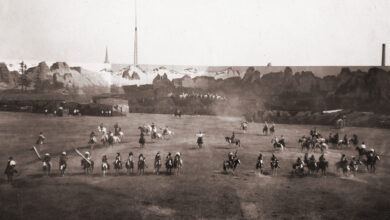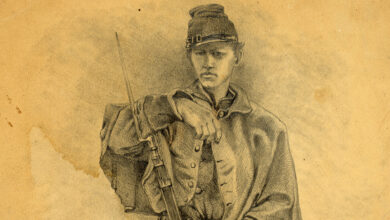As the Boxer Rebellion Stole Headlines from His Wild West, Buffalo Bill Put the Clash into His Show
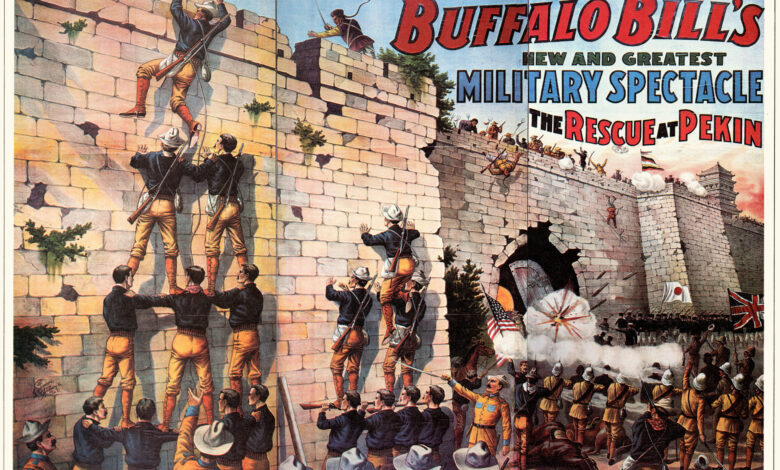
Fresh from robbing the Deadwood Stagecoach, the Sioux performers of Buffalo Bill’s Wild West changed into loose-fitting Chinese garb and attached long single braids to the backs of their heads, mimicking the clothing and hairstyle of the Boxers then rebelling halfway around the world. Thus was the stage set for the “Western Easterners” to man a wall and defend their position against U.S. Army re-enactors in a scene played out in Cody’s “Rescue at Pekin.”
Pittsburgh was the host city this day in late May 1901, and the big-city crowd did not disappoint. As the action unfolded, spectators stomped their feet so hard as to send vibrations through the grandstand. During the climactic scene, as the Army re-enactors scaled the artificial wall, the jingoistic roar from audience members swelled to ear-throbbing intensity, and they surged over the railings to join performers on the arena floor.
The drama depicted actual events of the ongoing 1899–1901 Boxer Rebellion. Emerging as a violent response to increasing foreign incursion into China, the Boxers (nicknamed for their martial arts skills, though officially known as the Society of Righteous and Harmonious Fists) sought to eradicate all signs of modern progress (railroads, telegraph lines, etc.) and called for the liquidaton of foreigners, particularly Christian missionaries (and their Chinese converts).
On June 20, 1900, the Boxers besieged foreign embassies in the Legation Quarter of Peking (present-day Beijing), trapping within its walls nearly 500 foreign civilians, 400 military personnel and 3,000 Chinese Christians. Fifty-five days into the siege eight nations, including the United States, sent some 20,000 soldiers to relieve the siege. In battle that August 14 and 15 they defeated the Boxers and then divided the capital city into occupation zones, sending occasional punitive forays into the countryside. Not until Sept. 7, 1901, did representatives of the allied nations and China’s Qing empire sign the Boxer Protocol, officially ending the rebellion.
Ever the savvy showman, Cody was quick to draw a correlation between the Boxers and American Indians. As the rebels had resisted foreign incursion, he reasoned, so Plains Indians had resisted the westward tide of Anglo settlement, cutting telegraph lines, attacking railroad crews and battling U.S. soldiers. Fueled by superstitious ideology, the Boxers believed they could induce spirits to enter their bodies and render them invulnerable to bullets, much like Plains Indian adherents of the “Ghost Dance” movement believed their ceremonial shirts would protect them. The latter movement ended in tragedy on Dec. 29, 1890, with the battle turned massacre at Wounded Knee, S.D., all but ending the American Indian wars.
Buffalo Bill was a stickler for the authentic, wherever possible employing real soldiers, cowboys and Indians performing with real weapons. But as he had no access to real Boxers, the duty fell to those Sioux already in Cody’s employ. They were perfect for the role, one New York Sun reporter quipped, as they were “used to dying” in each show. “They die in the cowboy battles about the emigrant wagon, and they die again in the chase of the Deadwood coach,” he wrote. “They made no objection to…dying the death of Boxers this year.” A New York Evening Sun reporter noted, tongue in cheek, “Some of them seemed a little ill at ease in their Chinese makeup, but they kept themselves entirely in the landscape, positively refused to scalp a single member of the allied forces and never even indulged in so much as the ghost of a war whoop.”
American Indians had long featured in promotions for the Wild West, which urged potential ticket buyers to come see the “horde of warpainted Arapaho, Cheyenne and Sioux Indians” (though after convincing the infamous Hunkpapa Lakota leader Sitting Bull to tour with him in 1885, Cody had hired only Sioux from the Pine Ridge Agency). Why did Plains Indians who had violently resisted “foreign incursion” agree to perform in the Wild West shows? For starters, those working for Buffalo Bill earned a decent wage, while employment prospects on and around the reservations were limited. In addition, room, board and travel were free. Finally, performers’ immediate families were welcome to join them on tour.
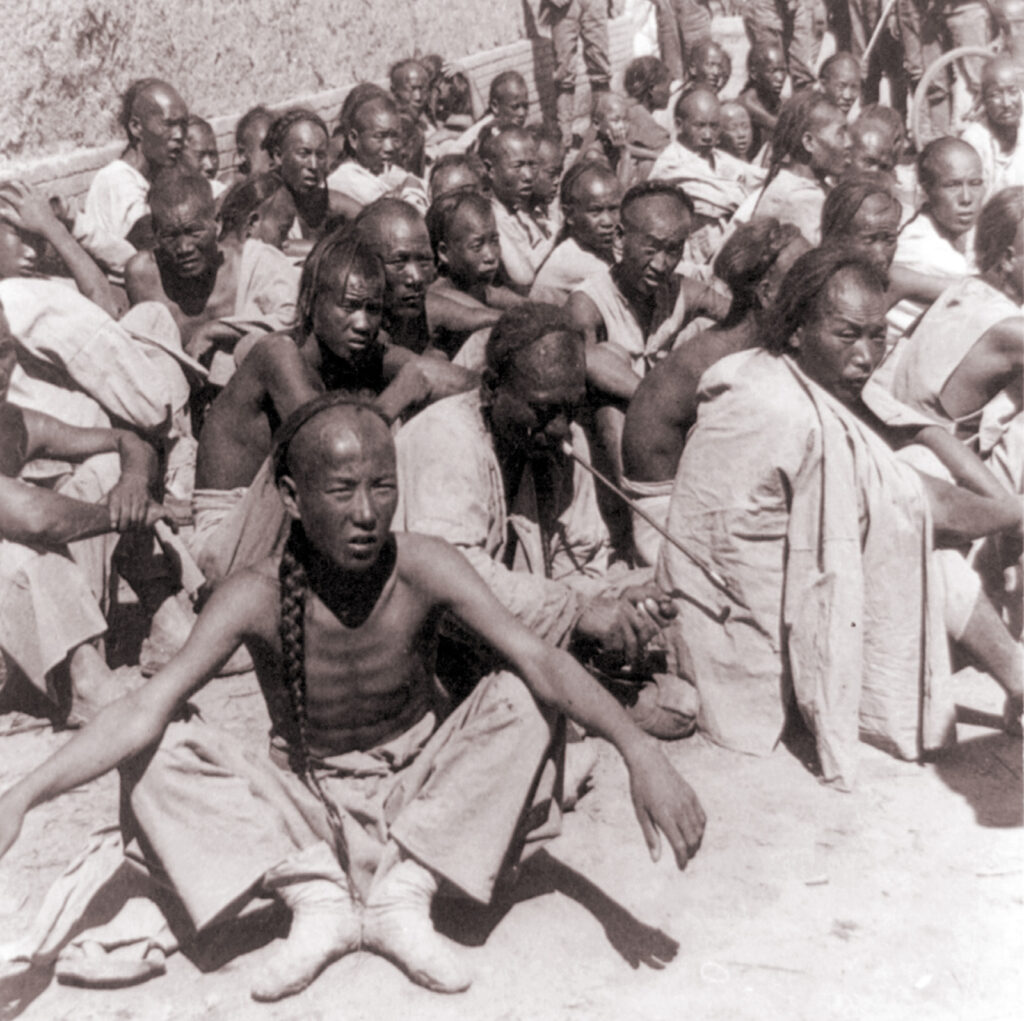
(Library of Congress)
In the fall of 1900, drawn like so many Americans by the dramatic events in China, Cody proposed to his theatrical manager, Nate Salsbury, that they incorporate a reenactment of the allied victory over the Boxers in the forthcoming season of the Wild West. The pair put their heads together and came up with “The Rescue at Pekin.”
On April 2, 1901, opening night, they debuted the Chinese-themed spectacle at New York’s Madison Square Garden. After a fortnight’s run Cody took the show on the road, and by the time the season wrapped in late October the troupe had performed in arenas from upstate New York to the South and across much of the Midwest. In 1902, with few changes to the program, Cody and company performed for audiences in the Western half of the country.
The twice-daily shows were an enormous draw, attracting on average some 20,000 to 30,000 patrons, not counting those turned away at the gate. The audience often exceeded the population of the host cities, as people from surrounding areas packed the stands. The June 4 edition of Pennsylvania’s Reading Herald reported that crowds began to gather in the early morning, by showtime transforming into a “great huddled mass.”
As the battle between the Boxers and the soldiers marked the grand finale of each performance, Cody and Salsbury spared no expense. “It was indeed an enormous and costly undertaking,” author John R. Haddad writes, “requiring 100 horses, large amounts of gunpowder and explosives, the latest in cannons and firearms, and of course the massive wall of Peking that loomed majestically over one end of the arena.” The cast alone, including the braided Sioux “Boxers,” numbered 500.
The performance lacked for nothing. Whether it was authentically cast or accurate in every detail was beside the point. Cody and company were, above all else, entertainers, and whether clad in Western buckskins or Chinese silks, they seldom disappointed the huddled masses.
This article originally appeared in the Spring 2024 issue of Wild West magazine.
Source link

